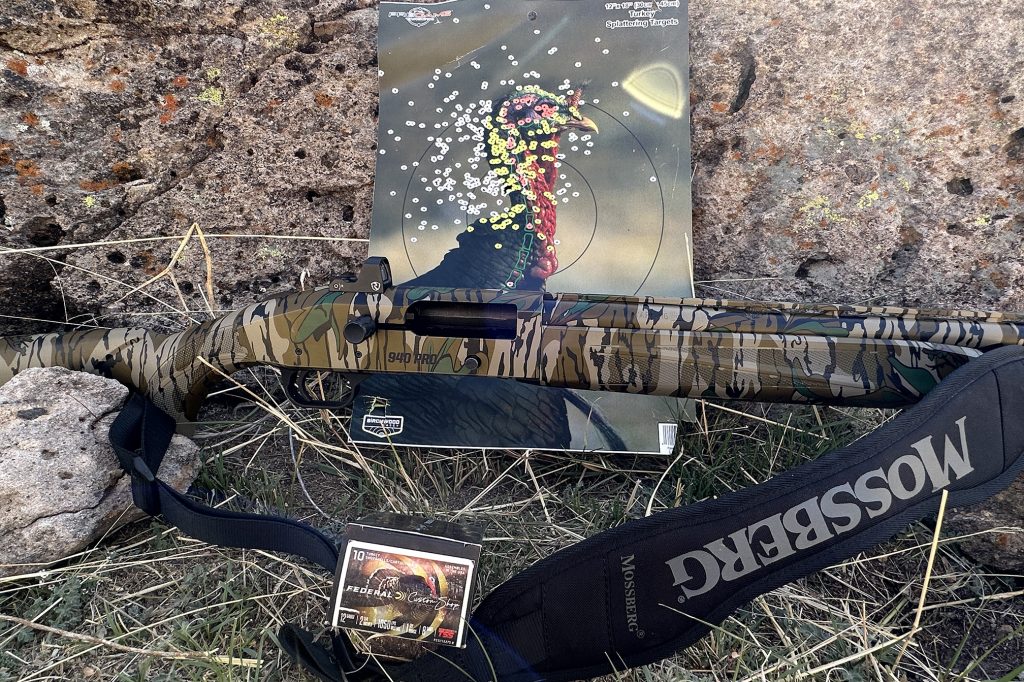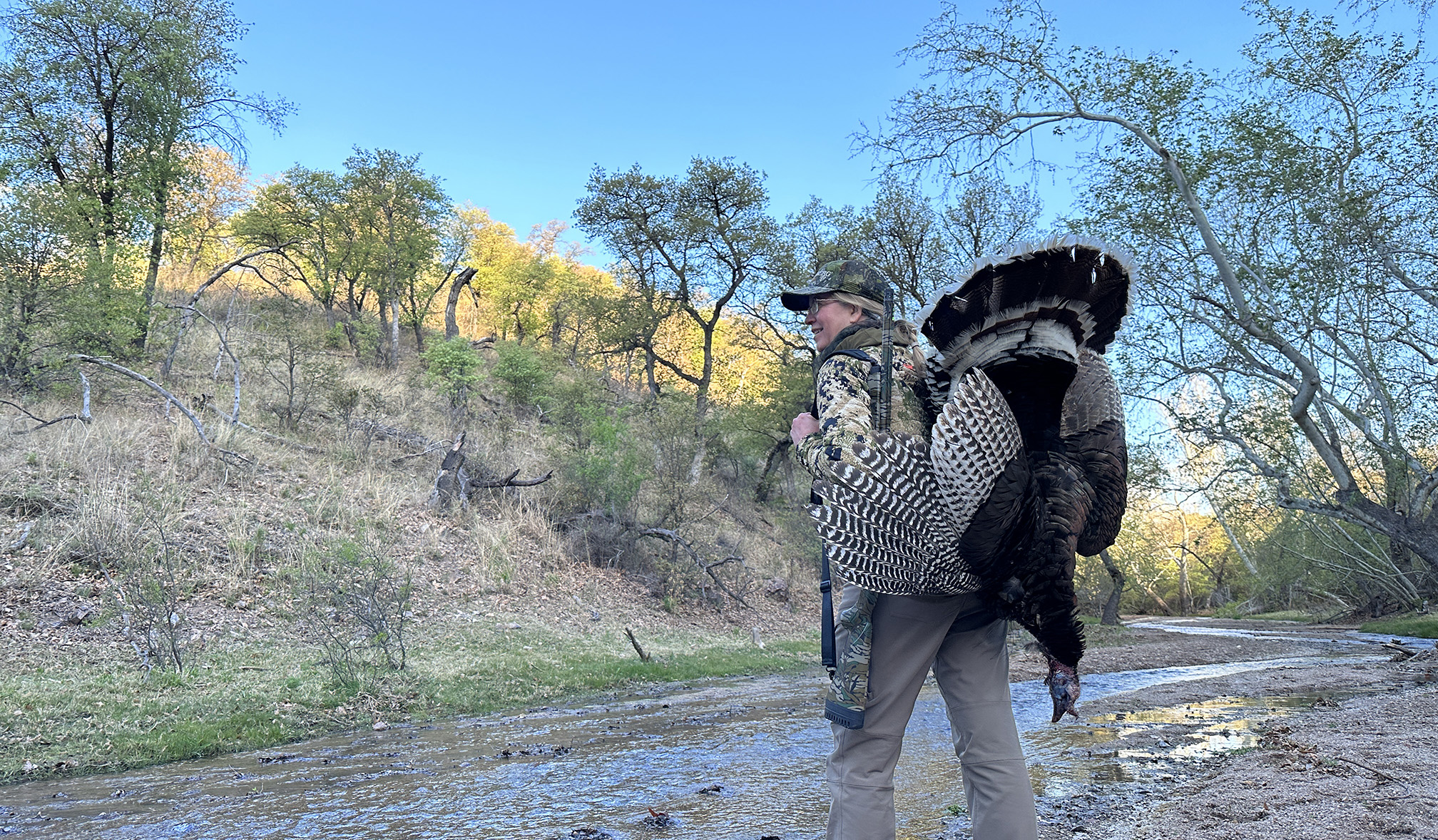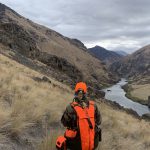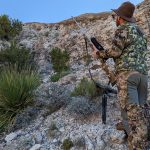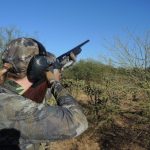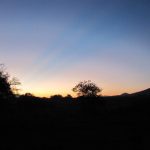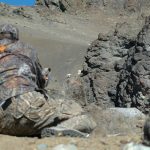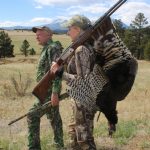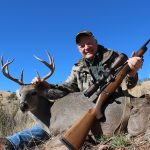Hunting the little-known Gould’s turkey in the rugged mountains of northern Mexico.
The truck rolled to a stop on the rough dirt track long before daylight, and when Ted shut off the engine, we all sat for a moment in the kind of deep silence you can only experience far from civilization. As I opened the door and slid quietly out into the desert darkness, the crooked, fingerlike silhouettes of ocotillo plants pointed toward the starlit sky. More than a century ago, Pancho Villa and his revolutionary band prowled this rugged landscape, perhaps gathering in this very spot to plan a predawn raid.
Our purpose here was nefarious as well, at least from a turkey’s perspective. We were preparing to lure an unsuspecting gobbler into an ambush. And not just any gobbler. We were hunting the Gould’s turkey, the largest, rarest, and arguably the most beautiful of all turkey subspecies. These are birds of the borderlands, occurring in small numbers in the far southern regions of Arizona and New Mexico, and more commonly in northwestern Mexico. They’re well suited to this rough desert country, frequenting rocky canyons and high mountains.
Like all turkeys, however, they need mature trees to roost in and openings where they can feed and strut. Our guide, Ted Jaycox, had found just such a location here on the grounds of Rancho Mababi in northern Sonora, and had placed a pop-up blind in a likely spot a couple of days earlier. We made our way by starlight, walking as silently as possible in his footsteps, crossing a dry wash and emerging into what I dimly discerned was a meadow. My hunting partner, Kristin Alberts, and I crawled into the blind while Ted sneaked out to set up a decoy.
We sat silently in the darkness for fifteen or twenty minutes before the pale dawn began to creep over the landscape. As it did, the quiet morning was shattered by an earsplitting gobble that sounded like it was right outside the blind. Then another gobble, from another direction, and a third one behind us. In the darkness inside the blind, I couldn’t see Ted and Kristin grinning, but I could feel their excitement, as palpable as my own.
Then, as I peered through the rectangular opening in the blind, I spotted a gobbler on the branch of a tree some fifty yards away, silhouetted against the gradually lightening sky. I marveled as the ungainly-looking bird strutted back and forth along the high branch, his tail magnificently fanned out and his gobbling nearly continuous. I could hardly contain my anticipation—surely he was about to fly down and land right in front of us. But he continued to gobble from his lofty perch, turning in every direction to showcase his impressive accoutrements to every hen in the area.
Eventually he did fly down, but in the other direction, and we couldn’t see where he landed. A variety of songbirds called from the trees around us, but turkey sounds grew quiet, although an occasional distant gobble kept us hopeful. Half an hour later, Kristin indicated with an oblique hand gesture that she had spotted a mature gobbler walking along the right-hand side of the meadow. Ted made a couple of soft clucks on his box call. The gobbler stepped into view, stopped at the sound of the call, turned our way, and caught sight of the decoy.
The result was dramatic. The big bird went straight for the decoy at a dead run. When he reached it, he paused, ready to do battle. The boom of Kristin’s 12-gauge shattered the morning air, the shot bowling the bird over instantly, stone dead. Our ruse was a success.
The beauty of a mature male Gould’s turkey, with its scarlet head and the bright white tips on its tail feathers, is matched only by that of the magnificent land it lives in. I took some photos of Kristin and her bird in the morning light with the gleaming 5,000-foot peaks of Sonora’s rugged Ajo Mountains in the background.
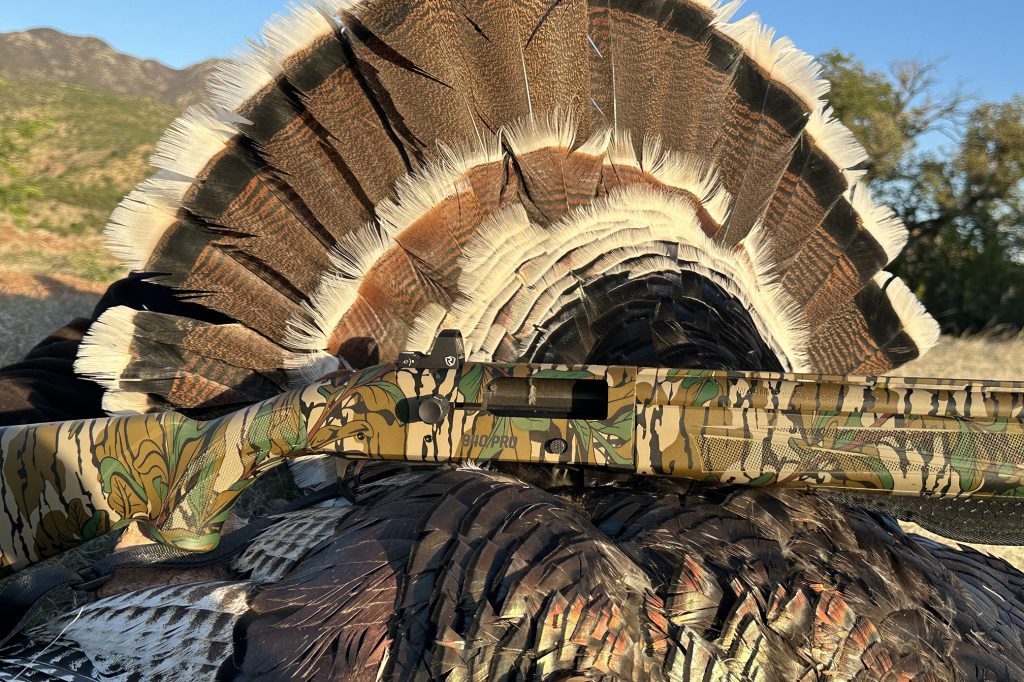
The Gould’s is our least-known turkey subspecies. These birds are similar to Merriam’s turkeys, but they are larger and have more dramatic and distinctive coloration in their tail feathers and the feathers along their rumps. Like the Merriam’s, they are birds of the mountains, typically living at elevations between 4,500 and 9,500 feet.
You can hunt Gould’s turkeys in Arizona and New Mexico, but tags are only available via a draw and are extremely limited. The National Wild Turkey Federation and its partners are working to rectify this by re-establishing strong, huntable populations in these states, but for now, your best bet if you want a Gould’s is to travel south of the border, where these birds are relatively abundant. And you don’t need to go very far into Mexico—the lovely Rancho Mababi, where we hunted with Jaycox’s Tall Tine Outfitters, is a ninety-minute drive from the border town of Agua Prieta, and just forty air miles south of Douglas, Arizona.

I’d had my own encounter with one of these stunning birds the previous afternoon. Ensconced in a different blind, with a hen and jake decoy twenty-five yards in front, I scanned a grassy opening as Ted made enticing turkey sounds on his call. A trickle of water ran somewhere to our front, and a riot of songbirds called from the oak and palo verde trees scattered through the meadow. To our left, a mountainside flanked us like a wall. We hadn’t been set up for more than fifteen minutes when we heard a turkey gobble from somewhere above us on that steep slope. A few minutes later we spotted him, well out of range, chasing a jake. The two turkeys disappeared into the trees.
We heard some sporadic gobbles as the afternoon wore on, but saw no more turkeys until about 5 p.m., when our gobbler—or perhaps it was a different one—reappeared, this time with several hens in tow. The flock worked its way through the meadow in front of us, about a hundred yards out. The hens were feeding, clucking, and occasionally sparring with each other, while the gobbler paraded back and forth, putting on a great show. Ted clucked periodically, but the turkeys initially seemed to pay little attention to his calls.
Soon, though, the flock began to feed closer to us, and the preoccupied gobbler continued to strut and preen, totally focused on his harem of hens. A large tree stood between him and our decoys. When he stepped clear of it, Ted clucked, much louder this time. The gobbler turned, looked, spotted the decoys—interlopers!—and raced toward them at a full gallop, wings tucked in and head outstretched. I had my shotgun ready and slid the safety off. As he skidded to a stop beside the decoys, I centered the red-dot sight on his neck and pressed the trigger. The shot pole-axed him, and he landed on his back with both feet in the air.
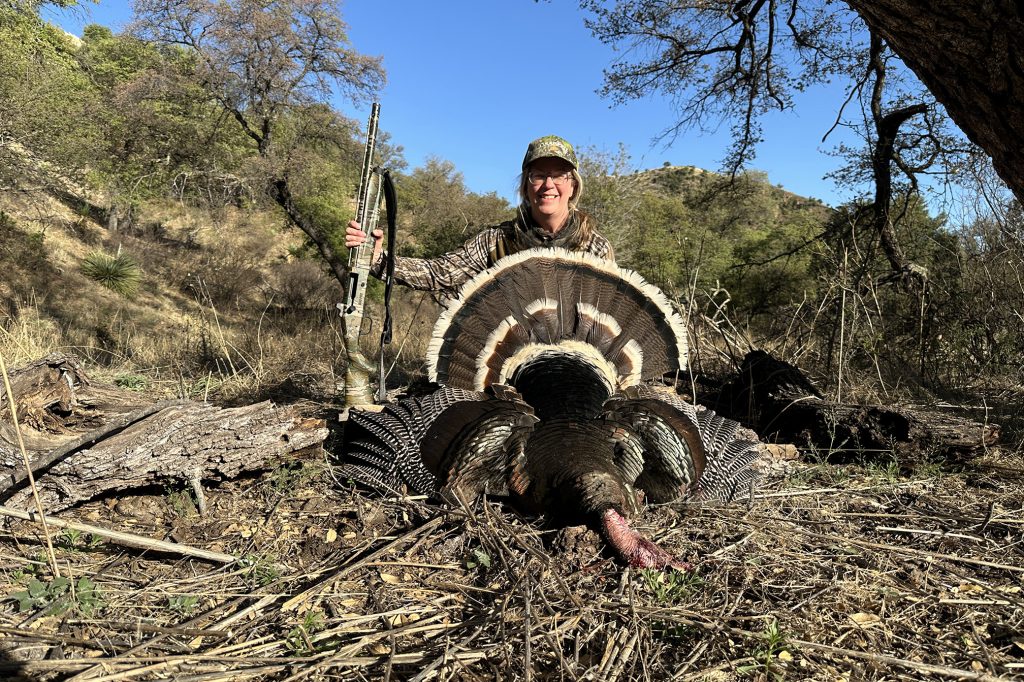
I was thrilled with my bird, a fine 22-pound gobbler with beautiful tail feathers, a good beard, and spurs well over an inch long. After taking photos, Kristin and I returned to the blind and stayed until dark, enjoying the teenager-like antics of a gang of eight jakes that milled around our decoys, strutting, making squeaky gobbles, and trying their best to impress the unresponsive plastic hen.
We were treated to an unexpected bonus the next morning, as we drove back to the Rancho Mababi headquarters with Kristin’s gobbler. We were traversing a beautiful creek bottom filled with large sycamores. As we stopped to take a few photos of the lovely area, we heard a resonant call not unlike that of a hen turkey. Ted told us to grab our binoculars, and at his urging, I focused my optics on a stunning songbird with a long tail, green head, and red breast. As it turns out, the Gould’s turkey is not the only interesting bird in this species-rich region of northern Mexico: Serious birdwatchers travel here from far and wide in hopes of spotting the elegant trogon, one of the most sought-after birds in North America for life-listers. We had the privilege of watching four of these beautiful birds as they sat on tree branches, scanning their surroundings and occasionally erupting into flight after some delectable insect.
That evening, over a delicious dinner of wild turkey with cream sauce and poblano peppers prepared on a vintage wood stove, we learned more about the history of Rancho Mababi, which dates from the early 1900s. Local lore has it that upheaval of the Mexican Revolution made life difficult for the original owners, and that Pancho Villa paid the ranch at least one visit to commandeer supplies. The borderlands have a chaotic and fascinating history of war and peace, outlaws and lawmen. This beautiful region of deserts and mountains is still a great place to seek adventure—as well as a wonderful destination to hunt a unique and magnificent wild turkey.
Book your own hunt for Gould’s or any of the other wild turkey subspecies with Tall Tine Outfitters.
The Ultimate Turkey Rig
Mossberg’s 940 Pro Turkey shotgun with Federal’s Custom Shop ammo loaded with tungsten super shot (TSS) proved to be an absolutely deadly combination for big Gould’s gobblers. It would be hard to find a more ideal turkey gun than the 940 Pro Turkey. This 12-gauge semiauto has a clean-running gas-vent system, a handy 18.5-inch barrel length, five-round capacity, quick-empty mag release, adjustable length of pull, and is choked with an X-Factor XX Full Turkey Tube. Overall length is under 40 inches, which makes this shotgun very handy to use in a blind. It comes with a HIVIZ fiber-optic sight and is also optics-ready.
TSS is an incredibly dense shot that has taken the hunting world by storm in recent years, and it’s an integral part of Federal Premium’s HEAVYWEIGHT TSS and Black Cloud TSS loads. Shotshells loaded with TSS represent a big upgrade from anything previously available, letting hunters kill gobblers, waterfowl, and upland game at longer distances. I shot my turkey at an ideal distance of 25 yards, thanks to the placement of the decoys, but TSS loads have the ability to reach out much farther for one-shot kills on big gobblers.
Federal’s online Custom Shop offers more than thirty-five possible shotshell combinations loaded with tungsten super shot (TSS). The Custom Shop ammo is a great solution for hunters who prefer 28-gauge and 16-gauge shotguns, since turkey loads can be hard to find for these smaller gauges. Simply go to the website and choose the gauge, shell length, shot size, and shot weight from a list of options. Gauges include 10, 12, 16, 20 and 28, as well as .410 bore, with shotshell length varying from 2¾ inch up to 3½ inches. Payloads range from 11/16-ounce up to a heavy-hitting 2½-ounce, and TSS shot sizes such as 7, 8, 9, and 10 are available. Order at federalpremium.com/custom-shop/custom-shotshell.–D.R.
